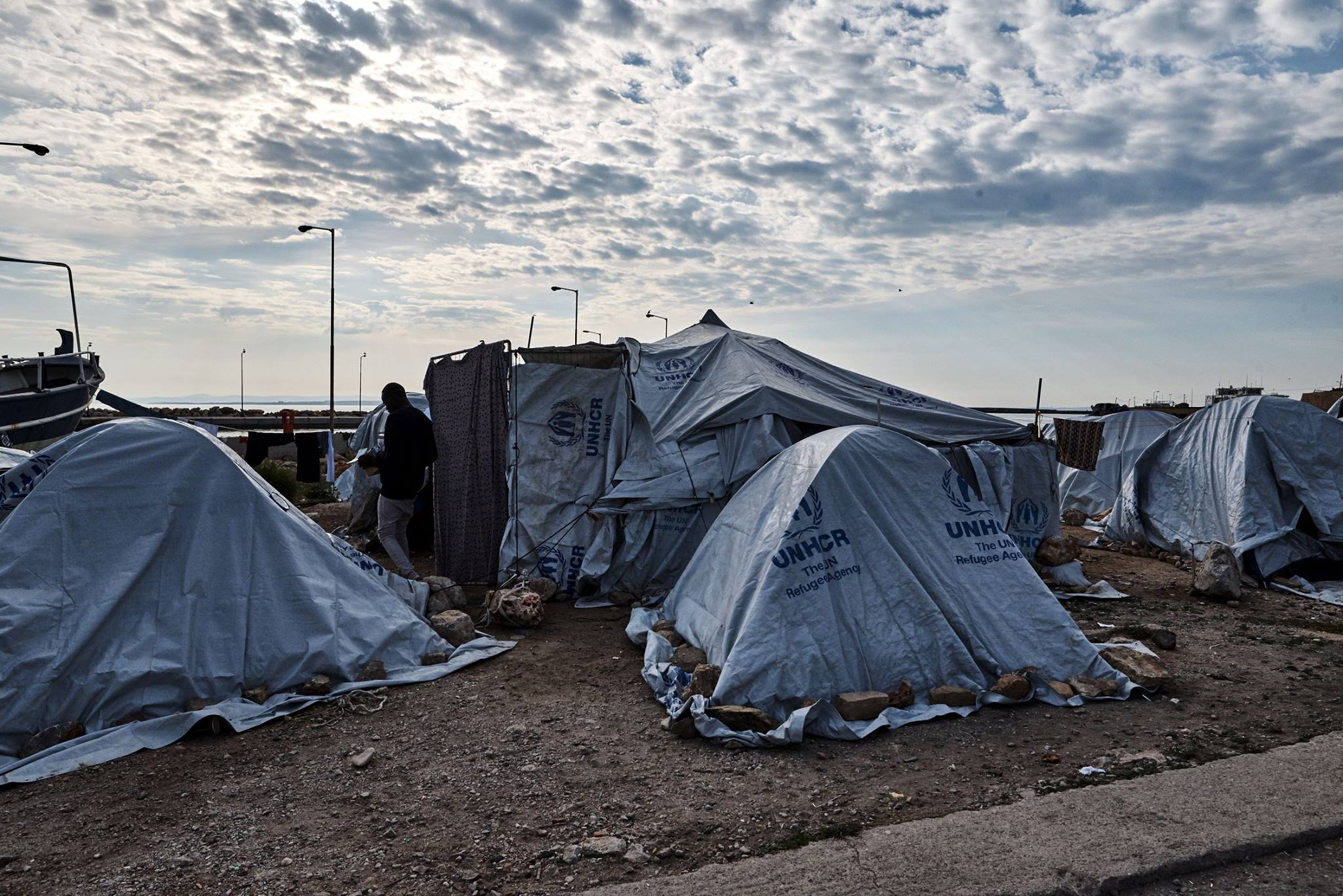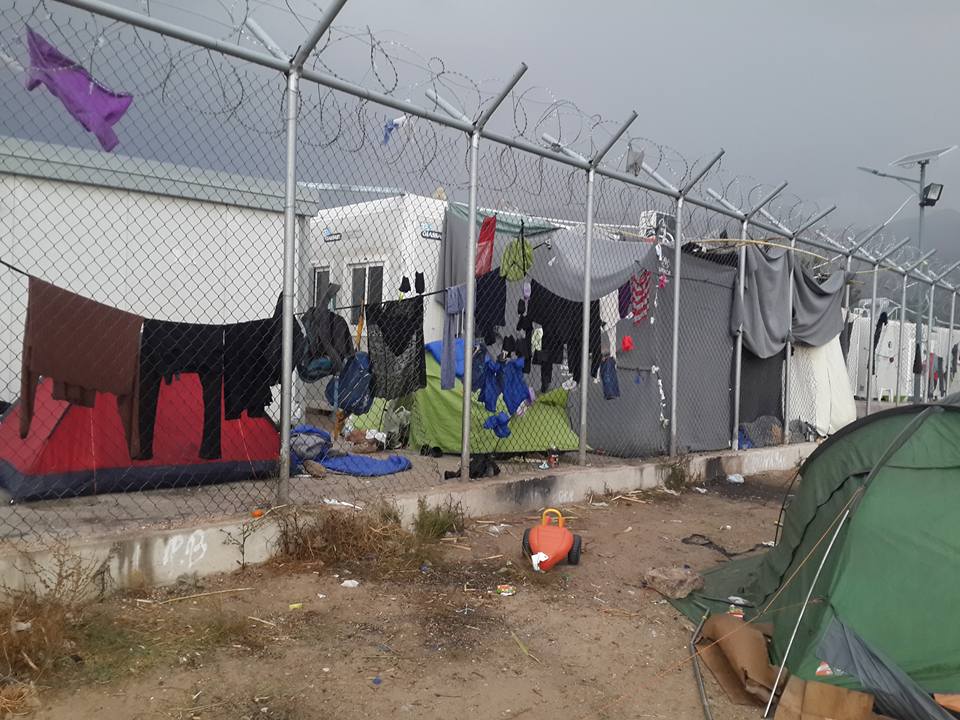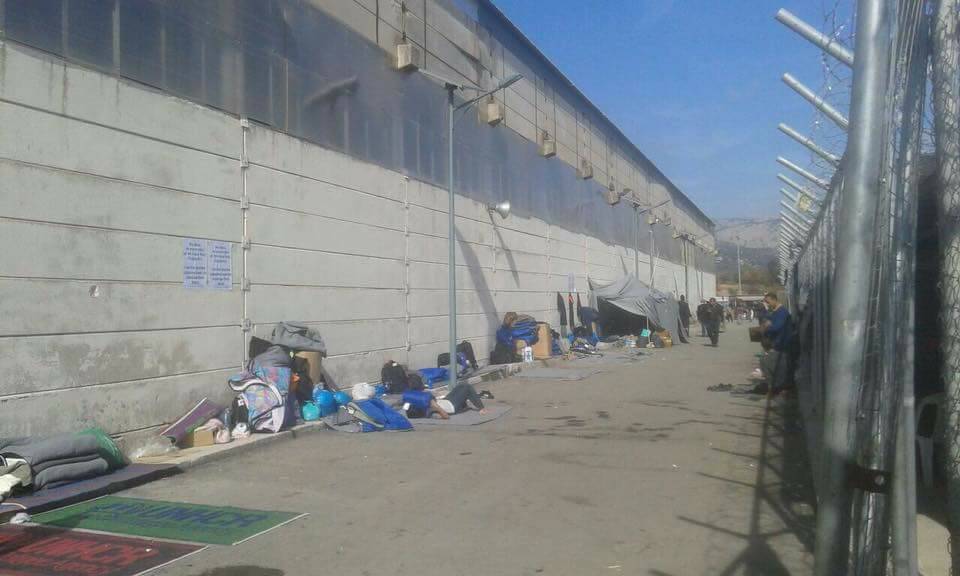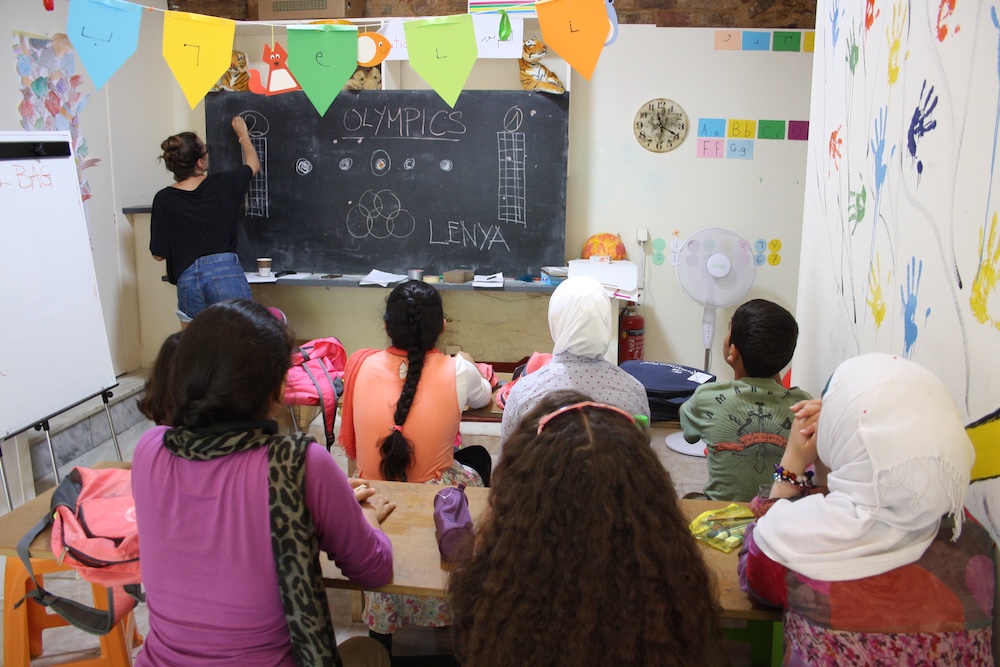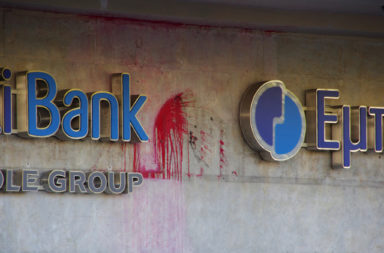Trapped on the Greece’s islands by the EU-Turkey deal of March 2016, asylum seekers on the islands now face even tougher conditions. The situation has worsened since the Greek government took over responsibility and funding from international aid organisations in August 2017. On Chios island, Greece, this transition and the closure of one of the Camps have had a dreadful impact on the conditions in Vial Refugee Camp.
On the 31st of July 2017 international aid organisations handed over the responsibility for around 14,000 stranded asylum seekers on Greece’s islands to the Greek government. In Spring, the Greek government had officially announced that they would take over all refugee-related services such as management of food, shelter, education, legal aid, and medical aid, etc on the islands from international organizations. As Greece is a sovereign member state of the EU, the EU respected this request. The European Civil Protection and Humanitarian Aid Operations (ECHO) thus directed its funding away from international aid organizations on the Greek islands and towards the Greek government. The government now either provides services through its own entities or funds Greek NGOs with this money.
A state’s takeover of responsibility is mostly a good sign for international aid organisations. First, it is the legal responsibility of any state to care for people seeking asylum on its soil. Second, it is a transition to a long-term solution. This is because international NGOs usually implement pre-designed manuals of certain sector operations (food, education, shelter, etc.) trying to bridge service gaps until they can be sustainably taken over by local actors. However, even while welcoming the transition to Greek government responsibility they warned of a “‘humanitarian gap’ resulting from a poorly planned transition.”
Chios Island
Shortly before the transition, I went to Chios, Greece, to take a look at the situation. Chios is Greece’s 4th largest island and lies about 150km south of Lesvos in the Aegean Sea. It used to be a popular holiday destination. Back then there were about 275 apartments for asylum seekers in particularly vulnerable situations, and two refugee camps on Chios: Souda and Vial.
Souda Camp
Souda was an unrecognized camp on a beach in Chios town which has just been closed. Before the EU-Turkey Deal Souda was a stop off point for those passing through. They would spend no more than a week before boarding the ferry to Athens. After the EU-Turkey deal the camp became a long-term home for thousands who wished to travel to Europe. Around 235 People used to live there in containers and tents. The last 60 residents were evicted in the early morning of 21st October.
Vial Camp
Vial Camp, the army-run facility, has an intended capacity of 1100, but as of mid-October close to 2 000 asylum seekers are living there in inhumane conditions.
About 10 kilometres outside the town of Chios is Vial Camp, a governmental, army-run facility where access is controlled, and most NGOs are not permitted to enter. Vial Camp has an intended capacity of 1100, but as of mid-October close to 2 000 asylum seekers are living there in overcrowded UNHCR containers, emergency tent accommodation, or under no roof at all. Among those are around 20 nationalities. The biggest groups are Syrian, Afghan and Iraqi, but there are also asylum seekers from Iran, Pakistan, Eritrea, Ethiopia, Somalia, Kongo, Kuwait, Yemen, Lebanon, Palestine, Sudan, and other states.
Effects of the Transition
So far, the general situation for refugees on Chios has changed for the worse. The most immediate effects were the Norwegian Refugee Council (NRC) and the Women and Health Alliance (WAHA) seizing their operations. The NRC was responsible for food security in Souda, community outreach, support of BAAS education, as well as supporting water, sanitation, and hygiene in Vial and Souda. The WAHA was responsible for medical services at boat landings, medical services and adult psychological care in both camps.
These responsibilities should have been taken over by the Reception and Identification Service (RIS), which is also in charge of managing Vial (but frankly failing at it), but the RIS is delayed in recruiting a sufficient amount of staff for a functioning camp management. At the same time, the Greek Red Cross is struggling to provide staff such as doctors and nurses for Vial.
The complete collapse of service has been prevented by UNHCR gaining access to the Greek Government money in order to uphold especially medical services and food security for Souda until mid-October.
One good development is that child protection has been taken over entirely by the Greek NGO PRAKSIS which is providing a functional service. Educational services are offered by BAAS and Save the Children, who have acquired private funding for their education program in Vial until the end of 2017.
Education for Refugee Children on Chios
In June this year, I volunteered as a teacher for refugee children at Be Aware And Share (BAAS) in Chios for a short time. BAAS is a Swiss NGO, founded in 2015, whose team of international volunteers runs a primary school for 5 to11 year olds, a High School for 12 to 20 year olds, and a Youth Centre for 14 to 22 year old asylum seekers in Chios. Its primary school runs six days a week, with alternating days for each camp. It teaches English, Maths, and projects such as music, the environment, geography, or natural sciences in a child friendly way, and creates a save space in which the children can playfully develop. A lot of these children had never been to a school before and the peaceful and positive environment of the school is a stark contrast to the daily drag of desperation in the camps. The High School offers lessons in English (sometimes also in Spanish, German, or Greek), as well as art, music and photography, and culture.
Education and other services are of extreme importance for asylum seekers who might stay on the island for weeks or years. It is not only important because it strengthens the morale in an otherwise depressing environment, but also because education encourages and quickens integration in a possible host country. While I was in Chios, kids tried to sneak themselves into school more than once, and almost every day parents would implore us to accept more kids into school. For the adults themselves there is nothing to take their minds off the misery they are experiencing. One particular day after an earthquake the school was closed due to security concerns, but the kids tried to convince us to open the school anyway: “Teacher, school is fine, earthquake is no problem. We are not scared.” After hearing that the school would be closed for that day they got visibly upset.
The plan for the education of all the children on Chios Island is still unclear, as the islands are categorized as ‘Reception and Identification Centres’ or transit camps and the situation is different on each island. The policy on the mainland has not yet been directly replicated on the islands. On Chios, the only children at the moment receiving the right to placement in schools are the ones with residence in one of the apartments provided by UNHCR. BAAS has, since the beginning of August, been working through donations in the hope it can keep operating its education programmes on a voluntary basis. It now awaits the plans for how the children inside the camps will receive state run education and is eager to work with the Greek government and offer its help for a for a smooth transition from non-formal education to formal education.
Regarding the overall situation asylum seekers are facing on Greece’s islands after the transition of responsibility and the closure of Souda, it seems to be time to call out the existing ‘humanitarian gap’ some have warned of. Chios is just one example of a Greek island that has become a place of indefinite confinement. Lesbos, Samos, Kos, and Leros are just the same and in some cases worse.
